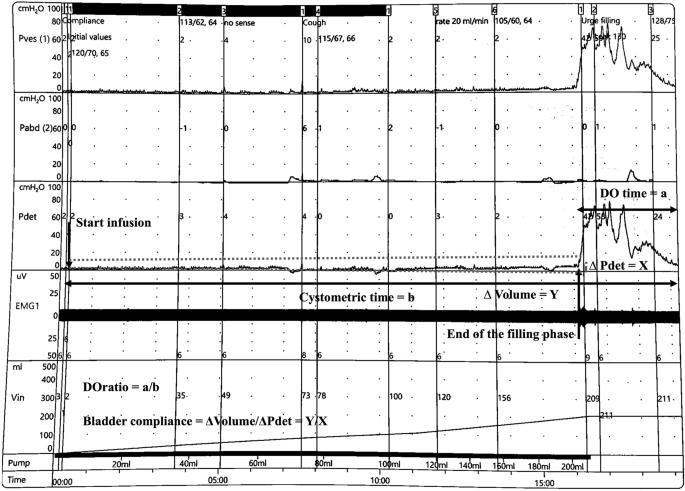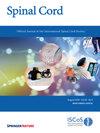作为创伤性脊髓损伤患者上尿路恶化独立预测因素的逼尿肌过度活动持续时间:一项回顾性队列研究的结果
IF 2.1
4区 医学
Q3 CLINICAL NEUROLOGY
引用次数: 0
摘要
研究设计:回顾性队列研究;研究地点:泰国清迈的一家康复机构;研究方法:从创伤性脊髓损伤(TSCI)后 6-12 个月接受膀胱测量评估的患者病历中获取数据。DO持续时间是独立的预测指标,通过DO/膀胱测量比率(DOratio)进行评估。其他常规尿动力学参数(最大逼尿肌压力、膀胱容量、膀胱顺应性和逼尿肌-括约肌运动障碍)和临床参数(年龄、性别、损伤程度和严重性、合并症、膀胱排空方法和尿路感染史)也已确定。结果为 UUTD,即慢性肾病(GFR < 60 ml/min/1.73 m2)、肾积水和/或膀胱输尿管反流。通过对所有其他参数进行调整,采用多变量 Cox 回归分析确定 DOratio 与 UUTD 之间的独立关联。在对这些患者总共 1260 年的随访中,共发现了 34 例 UUTD 事件,表明发病率为 27.0 例/1000 人-年。在对所有其他参数进行调整后,高 DOratio(≥0.33)与 UUTD 显著相关(危险比 = 3.00 [95% CI:1.12-7.99],p = 0.025)。然而,在临床应用 DOratio 作为 UUTD 的预测指标之前,还需要进一步的前瞻性研究。本文章由计算机程序翻译,如有差异,请以英文原文为准。

Duration of detrusor overactivity as an independent predictive factor of upper urinary tract deterioration in patients with traumatic spinal cord injury: results of a retrospective cohort study
To determine whether duration of detrusor overactivity (DO) during a cystometric study is an independent predictive factor of upper urinary tract deterioration (UUTD) in patients with traumatic spinal cord injury (TSCI). Retrospective cohort study. A rehabilitation facility in Chiang Mai, Thailand. Data were obtained from medical records of patients who underwent cystometric evaluation at 6–12 months after TSCI. The independent predictor of interest is the duration of DO, which was evaluated by the DO/cystometry ratio (DOratio). Other conventional urodynamic parameters (maximum detrusor pressure, cystometric capacity, bladder compliance, and detrusor-sphincter dyssynergia) and clinical parameters (age, sex, level and severity of injury, comorbidities, bladder emptying method, and history of urinary tract infection) were determined. The outcome was UUTD, which is indicated by chronic kidney disease (GFR < 60 ml/min/1.73 m2), hydronephrosis, and/or vesicoureteral reflux. Multivariable Cox regression analysis was used to determine the independent associations between DOratio and UUTD by adjusting with all other parameters. Medical records of 194 patients with TSCI were included in the study. During a combined total of 1260 follow-up years of those patients, 34 UUTD events were identified, indicating an incidence rate of 27.0 cases per 1000 person-years. After adjusting for all other parameters, a high DOratio (≥0.33) was significantly associated with UUTD (hazard ratio = 3.00 [95% CI: 1.12–7.99], p = 0.025). DOratio may be an independent cystometric predictor of UUTD in patients with TSCI. However, further prospective study is needed prior to applying DOratio as a predictor of UUTD in clinical settings. There was no clinical trial registration since this study is not a clinical trial.
求助全文
通过发布文献求助,成功后即可免费获取论文全文。
去求助
来源期刊

Spinal cord
医学-临床神经学
CiteScore
4.50
自引率
9.10%
发文量
142
审稿时长
2 months
期刊介绍:
Spinal Cord is a specialised, international journal that has been publishing spinal cord related manuscripts since 1963. It appears monthly, online and in print, and accepts contributions on spinal cord anatomy, physiology, management of injury and disease, and the quality of life and life circumstances of people with a spinal cord injury. Spinal Cord is multi-disciplinary and publishes contributions across the entire spectrum of research ranging from basic science to applied clinical research. It focuses on high quality original research, systematic reviews and narrative reviews.
Spinal Cord''s sister journal Spinal Cord Series and Cases: Clinical Management in Spinal Cord Disorders publishes high quality case reports, small case series, pilot and retrospective studies perspectives, Pulse survey articles, Point-couterpoint articles, correspondences and book reviews. It specialises in material that addresses all aspects of life for persons with spinal cord injuries or disorders. For more information, please see the aims and scope of Spinal Cord Series and Cases.
 求助内容:
求助内容: 应助结果提醒方式:
应助结果提醒方式:


